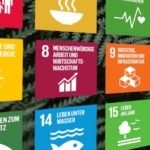10 Ways Your Organization Can Meet the 2030 Deforestation Goals
As we head toward 2030, the global commitment to halt deforestation has become a critical focal point in the fight against climate change and biodiversity loss. The 2030 Deforestation Goals, endorsed by many governments, businesses, and international organizations, aim to protect the world’s forests, reverse deforestation trends, and ensure sustainable land use practices. What do these goals mean for organizations like yours, though? More importantly, what can you do today to align your strategies with these targets and help your organization meet the 2030 deforestation goals?
Understanding the 2030 Deforestation Goals
The 2030 deforestation goals were formalized as part of the Glasgow Leaders’ Declaration on Forests and Land Use at the UN Climate Change Conference (COP26) in 2021. Over 140 countries, which account for more than 90% of the world’s forests, committed to stopping and reversing deforestation by the year 2030. The goals include halting deforestation, restoring degraded lands, supporting sustainable agriculture, investing in forest conservation, and protecting the rights of indigenous people.
Halting deforestation
This entails putting an end to forest loss caused by human activities, including logging, agricultural expansion, and infrastructure development.
Restoring degraded lands
The aim is not only to stop further forest destruction but also to restore areas that have already been degraded through deforestation.

Supporting sustainable agriculture
Encouraging farming practices that do not rely on deforestation and that allow for forest regeneration is key to these goals.
Investing in forest conservation
Governments and businesses are urged to increase funding and investment in conservation efforts to maintain healthy ecosystems.
Protecting the rights of Indigenous people
Many forests are home to Indigenous communities. The declaration calls for the protection of their rights and involvement in forest stewardship.
The implications of these targets are vast, affecting everything from agricultural supply chains to corporate sustainability strategies. For organizations that want to contribute to this global effort, meeting these goals can be a challenge. It is however an admirable effort that presents organizations with opportunities to innovate and grow sustainably as they embark on this selfless and rewarding journey.
Why Your Organization Should Care
So, why should your organization be concerned with these goals? The reality is that forest ecosystems provide vital services that extend beyond timber products. Forests play a key role in absorbing carbon dioxide, maintaining biodiversity, regulating the water cycle, and preventing soil erosion. When we destroy forests, we not only contribute to global warming but also jeopardize these services, which can have direct impacts on industries like agriculture, manufacturing, and construction.
By aligning with the 2030 deforestation goals, your organization can demonstrate environmental responsibility, build trust, and gain a competitive advantage.
Reputation and Responsibility
In today’s corporate world, stakeholders including investors, customers, and employees, increasingly value sustainability. By aligning with the 2030 deforestation goals, your organization can demonstrate environmental responsibility, which can help build trust and enhance your reputation in a competitive marketplace.
Compliance with Future Regulation
With global deforestation goals in place, governments are likely to implement stricter regulations around land use, emissions, and deforestation. Getting ahead of these regulations will not only ensure compliance but could also give your organization a strategic advantage.
Risk Management
Deforestation poses risks to supply chains, particularly for industries that rely on agricultural products like palm oil, soy, or beef. Taking steps to reduce deforestation-related risks can help stabilize your supply chain, protect your investments, and ensure business continuity in the face of environmental challenges.
10 Actions Your Organization Can Take Today to Meet the 2030 Deforestation Goals
Achieving the 2030 deforestation goals isn’t just the responsibility of governments. Organizations, big and small, can make a meaningful difference by implementing sustainable practices. Here are 10 things you can do right now to help drive your organization towards these goals:
Conduct a Deforestation Risk Assessment
Start by identifying areas within your supply chain or business operations that contribute to deforestation. This could be sourcing materials like paper, wood, or agricultural products. Understanding where deforestation risks exist will allow you to develop a plan to mitigate them.
Set a Zero-Deforestation Policy
A zero-deforestation policy can demonstrate your commitment to sourcing only from suppliers that do not contribute to forest loss. This policy should include clear guidelines on where you will source materials from and how you will hold suppliers accountable.
Use Sustainable Suppliers
Transition to suppliers who are certified by organizations such as the Forest Stewardship Council (FSC) or the Roundtable on Sustainable Palm Oil (RSPO). These certifications ensure that the products you purchase come from sustainably managed forests.
Integrate Agroforestry into Supply Chains
Agroforestry – growing trees alongside crops or livestock – can be an effective way to promote biodiversity and sustainability while improving agricultural productivity. Encourage or invest in suppliers that integrate agroforestry into their farming practices.
Support Reforestation Initiatives
Partner with reforestation projects or invest in carbon offset programs that focus on planting trees. This not only helps to mitigate carbon emissions but also contributes to the restoration of degraded land.
Reducing, reusing, and recycling materials can limit the demand for raw resources, reducing the pressure on forests.
Promote Circular Economy Practices
Reducing, reusing, and recycling materials in your supply chain can limit the demand for raw materials, thus reducing the pressure to clear forests for resource extraction.
Increase Transparency
Commit to full transparency in your supply chain by using tools like blockchain to trace the origins of products. Publicly sharing information on your sourcing practices can increase accountability and encourage others to follow suit.
Engage in Advocacy
Use your platform to advocate for stronger forest protection laws and sustainable land use policies. Collaborating with NGOs, government agencies, or industry coalitions can amplify your impact and bring about systemic change.
Invest in Sustainable Innovation
Look into new technologies and practices that reduce reliance on deforestation. This could include everything from sustainable packaging alternatives to innovative agricultural methods that reduce land use.
Educate and Train Your Team
Ensure that all employees, particularly those in procurement and operations, understand the importance of preventing deforestation. Provide training on sustainable sourcing and forest-friendly business practices.
The Road Ahead
Meeting the 2030 deforestation goals is a monumental task, but one that is critical to the health of our planet and future generations. For organizations, this presents an opportunity to step up and be part of the solution. By implementing these strategies, you can reduce your environmental impact, enhance your brand reputation, and future-proof your operations.
The key is to start today. Every action counts, and collectively, we can create a future where forests thrive, biodiversity is protected, and sustainability is at the heart of business.
This article is just the beginning. For a deeper dive into how your business can integrate biodiversity into its strategy and align with the TNFD’s recommendations, sign up for early access to our white paper, “TNFD & Biodiversity: Integrating Nature into Business Strategy”, releasing on September 30th.



